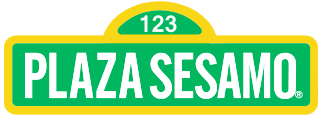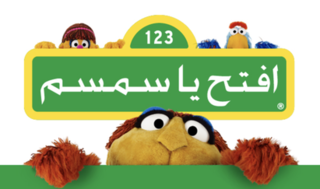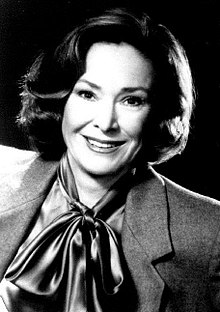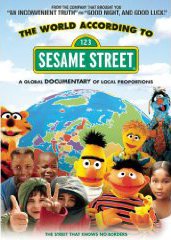
Sesame Street is an American educational children's television series that combines live-action, sketch comedy, animation and puppetry. It is produced by Sesame Workshop and was created by Joan Ganz Cooney and Lloyd Morrisett. It is known for its images communicated through the use of Jim Henson's Muppets, and includes short films, with humor and cultural references. It premiered on November 10, 1969, to positive reviews, some controversy, and high viewership. It has aired on the United States national public television provider PBS since its debut, with its first run moving to premium channel HBO on January 16, 2016, then its sister streaming service HBO Max in 2020. Sesame Street is one of the longest-running shows in the world.

Sesame Workshop (SW), originally known as the Children's Television Workshop (CTW), is an American nonprofit organization that has been responsible for the production of several educational children's programs—including its first and best-known, Sesame Street—that have been televised internationally. Television producer Joan Ganz Cooney and foundation executive Lloyd Morrisett developed the idea to form an organization to produce Sesame Street, a television series which would help children, especially those from low-income families, prepare for school. They spent two years, from 1966 to 1968, researching, developing, and raising money for the new series. Cooney was named as the Workshop's first executive director, which was termed "one of the most important television developments of the decade."

The preschool educational television program Sesame Street was first aired on public television stations on November 10, 1969, and reached its 54th season in 2023. The history of Sesame Street has reflected changing attitudes to developmental psychology, early childhood education, and cultural diversity. Featuring Jim Henson's Muppets, animation, live shorts, humor and celebrity appearances, it was the first television program of its kind to base its content and production values on laboratory and formative research, and the first to include a curriculum "detailed or stated in terms of measurable outcomes". Initial responses to the show included adulatory reviews, some controversy and high ratings. By its 40th anniversary in 2009, Sesame Street was broadcast in over 120 countries, and 20 independent international versions had been produced. It has won eleven Grammys and over 150 Emmys in its history—more than any other children's show.

Mr. Harold Hooper was one of the first four human characters to appear on the television series Sesame Street. Created by producer and writer Jon Stone, Mr. Hooper is the original proprietor of Hooper's Store, the neighborhood variety store and combination diner/corner store that serves as a place for Muppets and humans to meet and interact. Lee, a character actor and instructor was "perfectly cast" as Mr. Hooper. Mr. Hooper ranked first of all human characters of the show in recognition by young viewers. Mr. Hooper, who has been described as "slightly cranky but good-hearted" and "curmudgeonly", bridges the gap between the older generation and its young audience. Hooper's Store, "an idealized social institution", is an extension of his personality. He had a close relationship with the Muppet Big Bird.

Plaza Sésamo is one of the first international co-productions of the first preschool television program Sesame Street. Its first season premiered in Mexico in 1972, and the last season ended in 2018 during the holiday season and the 50th anniversary of Sesame Street, but the show returned in 2020 and was immediately a ratings hit. It also aired throughout Latin America, to a potential audience of 25 million children in 34 countries. Unlike some of the earliest co-productions, which consisted of dubbed versions of Sesame Street with local language voice-overs, Plaza Sésamo was a true co-production. Half of the show was adapted from the American show, and half was original material, created in Mexico by Mexican writers, performers, and producers. The first season consisted of 130 half-hour episodes. The Plaza Sésamo development process was similar to that of the American show. Its goals were developed by local experts in television, child development, and early education during curriculum seminars in Caracas, Venezuela. Sésamo's goals emphasized problem solving and reasoning, and also included perception, symbolic representation, human diversity, and the child's environment. Other goals included community cooperation, family life, nutrition, health, safety, self-esteem, and expressing emotions. Early reading skills were taught through the whole language method. The show's budget for the first and second seasons was approximately US$1.6 million.

Ulitsa Sezam is the Russian production of the children's television program Sesame Street. The show was first released in 1996 and went off the air in 2010.
Elmo's World is a segment that is shown at the end of the American children's television program Sesame Street which premiered on November 16, 1998, as part of a broader structural change to the show. It originally lasted fifteen minutes at the end of each episode. The segment ran until 2009, and then returned in 2017. The segment was designed to appeal to younger viewers and to increase ratings, which had fallen in the past decade. The segment is presented from the perspective of a three-year-old child as represented by its host, the Muppet Elmo, performed by Kevin Clash in the original series and Ryan Dillon in the 2017 reboot.

Iftah Ya Simsim is the first international co-production of the American children's television series Sesame Street created in the Arabian world. It premiered in Kuwait on September 14, 1979, and was broadcast in 22 Arabic-speaking countries, running until June 23, 1989. The program continued to be well-known decades after it went off the air.
Baghch-e-Simsim is a Dari- and Pashto-language co-production based on the American children's television series Sesame Street. The series launched in Afghanistan in December 2011, and has aired on TOLO and Lemar.

"Snuffy's Parents Get a Divorce" is the name of an episode on the children's television program Sesame Street. Produced in 1992, it never aired because tests showed several unintended negative effects. Sesame Street has had a history of presenting difficult topics as part of its affective curriculum goals, including death, marriage, childbirth, and disaster. Extensive research was done before these episodes were written and produced, to ascertain their focus, and after they aired, to analyze the effect they had on viewers, and that was the case for "Snuffy's Parents Get a Divorce." The show's producers had expressed a desire to produce the episode as early as 1989, and they were convinced that it was a topic they should address after the US Census Bureau reported that 40% of American children had experienced divorce.

Children and Television: Lessons from Sesame Street (1974) is a non-fiction book written by Gerald S. Lesser, in which he describes the production of Sesame Street, and the formation and pedagogical philosophy of the Children's Television Workshop. Lesser was a professor at Harvard University, studying how social class and ethnicity interacted with school achievement and was one of the first academics in the US who researched how watching television affected children and their development. He was initially skeptical about the potential of using television as a teaching tool, but he was eventually named as the advisory board chairman of the Children's Television Workshop (CTW), the organization created to oversee the production and research of Sesame Street, and was the show's first educational director. Lesser wrote the book early in Sesame Street's history, to evaluate the show's effectiveness, to explain what its writers, researchers, and producers were attempting to do, and to respond to criticism of Sesame Street.
In 1969, the children's television show Sesame Street premiered on the National Educational Television network in the United States. Unlike earlier children's programming, the show's producers used research and over 1,000 studies and experiments to create the show and test its impact on its young viewers' learning. By the end of the program's first season, Children's Television Workshop (CTW), the organization founded to oversee Sesame Street production, had developed what came to be called "the CTW model": a system of planning, production, and evaluation that combined the expertise of researchers and early childhood educators with that of the program's writers, producers, and directors.
Sesame Street is an American children's television program that is known for its use of format and structure to convey educational concepts to its preschool audience, and to help them prepare for school. It utilizes the conventions of television such as music, humor, sustained action, and a strong visual style, and combines Jim Henson's Muppets, animation, short films, humor, and cultural references. The show, which premiered in 1969, was the first to base its contents, format, and production values on laboratory and formative research. According to researchers, it was also the first to include a curriculum "detailed or stated in terms of measurable outcomes".

Music has been a part of the children's television show Sesame Street since its debut on PBS in 1969. For the first time, music was used as a teaching tool on a TV program for children; the songs written and performed on the show fulfilled specific purposes and supported its curriculum. The music on Sesame Street consisted of many styles and genres, but was consistent and recognizable so that it could be reproduced. The producers recorded and released dozens of albums of music; many songs became "timeless classics". In order to attract the best composers and lyricists, CTW allowed songwriters to retain the rights to the songs they wrote, which allowed them to earn lucrative profits. Sesame Street Book & Record, recorded in 1970, went gold and won a Grammy. As of November 2019, Sesame Workshop has partnered with Warner Music Group's Arts Music division to reform Sesame Street Records to make the music of Sesame Street fully available.
The children's television show Sesame Street, which premiered on public broadcasting television stations in 1969, was the first show of its kind that utilized a detailed and comprehensive educational curriculum, with specific educational goals, in its content. Its goals were garnered from in-house formative research and independent summative evaluations, and its first curriculum was created in a series of five seminars in 1968.
The children's television program Sesame Street premiered in 1969 to high ratings, positive reviews, and some controversy, which have continued during its history. Even though the show aired on only 67% of American televisions at the time of its premiere, it earned a 3.3 Nielsen rating, or 1.9 million households. By its tenth anniversary in 1979, 9 million American children under the age of six were watching Sesame Street daily. Its ratings declined in the 1990s, due to societal changes. A survey conducted in 1996 found that by the age of three, 95% of all American children had watched it. By its fortieth anniversary in 2009, it was ranked the fifteenth most popular children's show.
A few months after the 1969 premiere of the children's television program Sesame Street in the U.S., talks began in the United Kingdom to broadcast the programme or develop a co-production on British television. The idea was controversial at the time; the BBC was opposed to it, and ITV was reluctant. Response from parents, educators, and television officials to the show was varied, ranging from distaste to acceptance. After much public debate, the BBC chose not to air Sesame Street for several reasons, including the show's educational methods, its creation for American audiences, and the UK's long history of quality educational television programmes for young children. ITV, after much research, including a report entitled Reactions to Sesame Street in Britain, 1971, chose to air Sesame Street on a limited basis. It then switched to Channel 4 in the 1980s and aired there until 2001, when it was pulled from its regular schedule, replaced by The Hoobs.
Rechov Sumsum is the Israeli adaptation of the U.S. children's show of the same name.

Batibot is a Philippine television educational show produced by the Philippine Children's Television Foundation (PCTF). It debuted in 1984 as the replacement of Sesame, a co-production of PCTV and the Children's Television Workshop (CTW) from 1983 to 1984.











